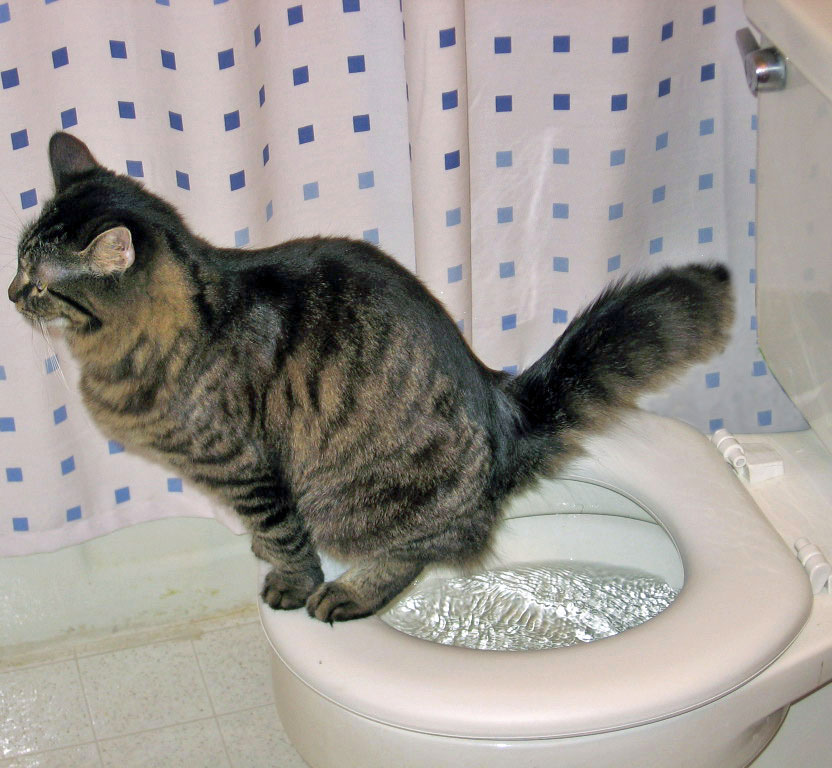Avoid Plumbing Problems: Don't Flush Cat Poop Down Your Toilet - Professional Guidance
CallWhat are your opinions about Don’t flush cat feces down the toilet?

Intro
As cat proprietors, it's necessary to be mindful of how we get rid of our feline friends' waste. While it might seem hassle-free to purge pet cat poop down the commode, this technique can have destructive repercussions for both the atmosphere and human wellness.
Ecological Impact
Flushing cat poop introduces harmful virus and parasites right into the water supply, positioning a considerable risk to water ecological communities. These pollutants can negatively influence marine life and concession water high quality.
Health Risks
In addition to ecological worries, purging feline waste can likewise pose health risks to humans. Cat feces might have Toxoplasma gondii, a bloodsucker that can trigger toxoplasmosis-- a potentially severe illness, specifically for expecting women and people with damaged immune systems.
Alternatives to Flushing
Thankfully, there are safer and extra liable methods to take care of feline poop. Consider the following options:
1. Scoop and Dispose in Trash
The most common approach of throwing away feline poop is to scoop it into a biodegradable bag and toss it in the trash. Be sure to utilize a dedicated clutter scoop and deal with the waste promptly.
2. Use Biodegradable Litter
Opt for eco-friendly cat clutter made from materials such as corn or wheat. These litters are eco-friendly and can be securely dealt with in the garbage.
3. Bury in the Yard
If you have a backyard, think about hiding feline waste in a marked location far from vegetable yards and water sources. Make certain to dig deep enough to stop contamination of groundwater.
4. Install a Pet Waste Disposal System
Purchase an animal garbage disposal system especially created for feline waste. These systems utilize enzymes to break down the waste, minimizing odor and ecological influence.
Final thought
Liable animal possession extends beyond giving food and shelter-- it likewise involves proper waste monitoring. By refraining from flushing pet cat poop down the bathroom and opting for alternative disposal techniques, we can lessen our ecological footprint and safeguard human wellness.
Why Can’t I Flush Cat Poop?
It Spreads a Parasite
Cats are frequently infected with a parasite called toxoplasma gondii. The parasite causes an infection called toxoplasmosis. It is usually harmless to cats. The parasite only uses cat poop as a host for its eggs. Otherwise, the cat’s immune system usually keeps the infection at low enough levels to maintain its own health. But it does not stop the develop of eggs. These eggs are tiny and surprisingly tough. They may survive for a year before they begin to grow. But that’s the problem.
Our wastewater system is not designed to deal with toxoplasmosis eggs. Instead, most eggs will flush from your toilet into sewers and wastewater management plants. After the sewage is treated for many other harmful things in it, it is typically released into local rivers, lakes, or oceans. Here, the toxoplasmosis eggs can find new hosts, including starfish, crabs, otters, and many other wildlife. For many, this is a significant risk to their health. Toxoplasmosis can also end up infecting water sources that are important for agriculture, which means our deer, pigs, and sheep can get infected too.
Is There Risk to Humans?
There can be a risk to human life from flushing cat poop down the toilet. If you do so, the parasites from your cat’s poop can end up in shellfish, game animals, or livestock. If this meat is then served raw or undercooked, the people who eat it can get sick.
In fact, according to the CDC, 40 million people in the United States are infected with toxoplasma gondii. They get it from exposure to infected seafood, or from some kind of cat poop contamination, like drinking from a stream that is contaminated or touching anything that has come into contact with cat poop. That includes just cleaning a cat litter box.
Most people who get infected with these parasites will not develop any symptoms. However, for pregnant women or for those with compromised immune systems, the parasite can cause severe health problems.
How to Handle Cat Poop
The best way to handle cat poop is actually to clean the box more often. The eggs that the parasite sheds will not become active until one to five days after the cat poops. That means that if you clean daily, you’re much less likely to come into direct contact with infectious eggs.
That said, always dispose of cat poop in the garbage and not down the toilet. Wash your hands before and after you clean the litter box, and bring the bag of poop right outside to your garbage bins.
https://trenchlesssolutionsusa.com/why-cant-i-flush-cat-poop/

As an avid reader about How to Dispose of Cat Poop and Litter Without Plastic Bags, I think sharing that article was important. Enjoyed our piece? Please share it. Let someone else locate it. I am grateful for your time. Visit again soon.
Appointment